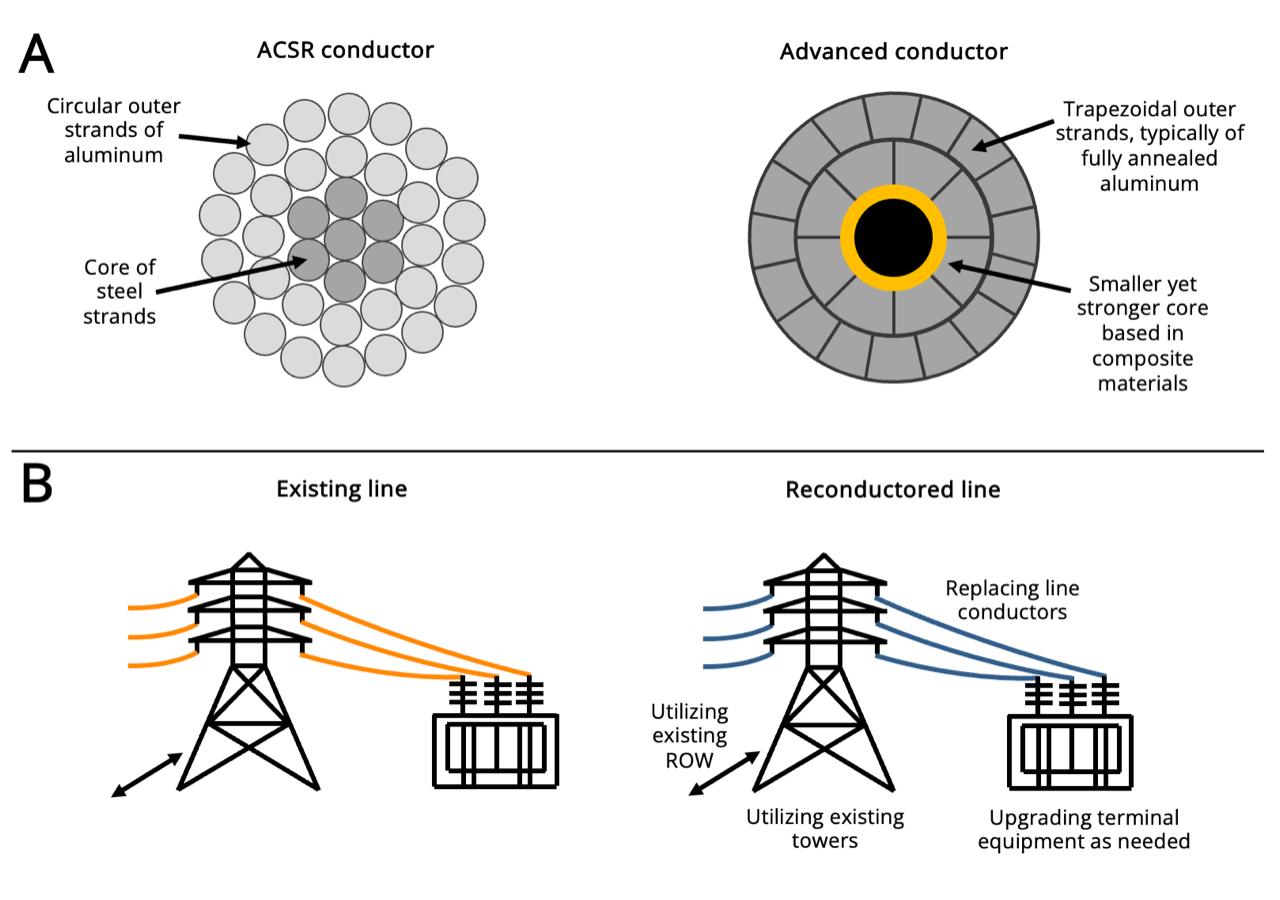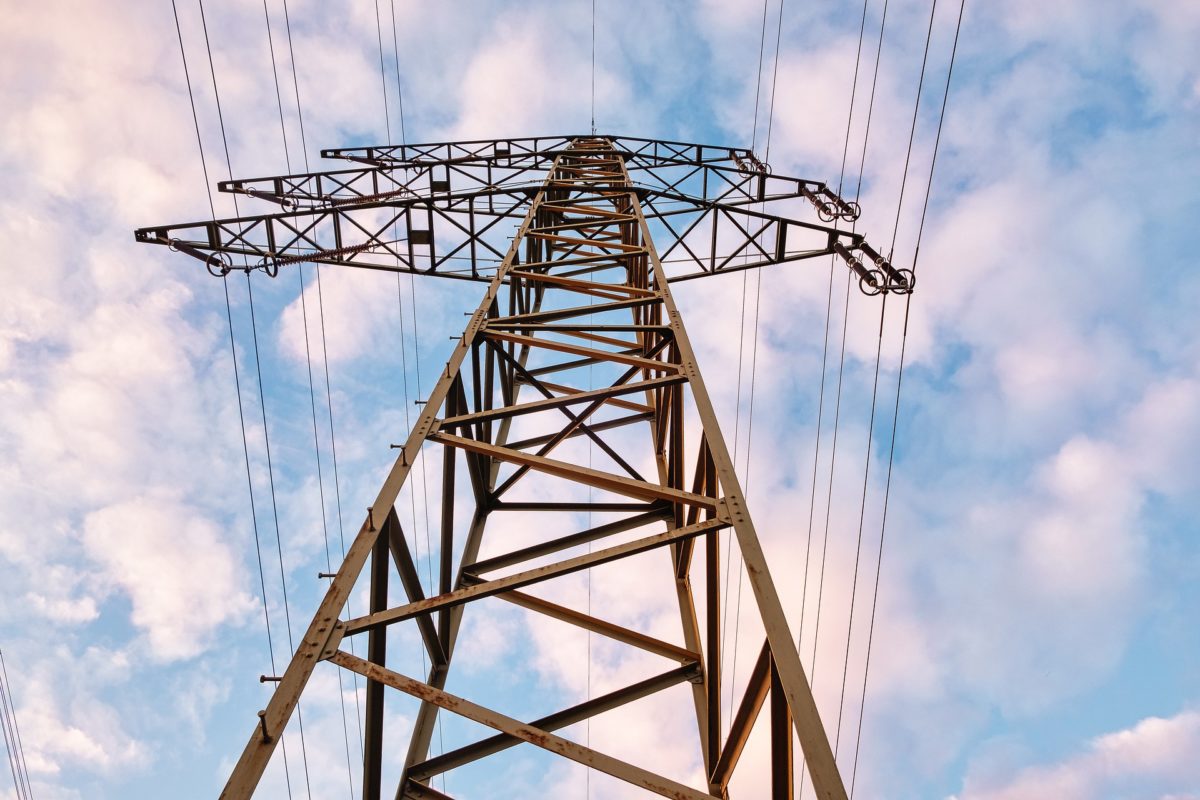Large-scale reconductoring can “unlock” renewables near the existing transmission network, says a report from a team of researchers from University of California, Berkeley and the consultancy GridLab.
While other technologies, such as those reviewed in a U.S. Department of Energy (DOE) “liftoff” report, could also enable a near-term increase in transmission capacity, the report says reconductoring with advanced conductors “offers the greatest potential to provide substantial capacity increases—up to double, within existing rights-of-way”—a finding consistent with DOE’s report. The authors say that reconductoring projects typically cost less than half the price of new lines for similar capacity increases.
A comparison of legacy conductors and advanced conductors is shown in the image below.

Source: Energy Institute at the UC Berkeley Haas School of Business
Reconductoring could enable 764 GW of transmission-connected solar by 2035 in “indicative transmission corridors” in a scenario in which the build rate of new right-of-way transmission is constrained, according to a map linked from the report.
Advanced conductors are available from U.S. manufacturers 3M, CTC Global and TS Conductor, the report notes.
DOE aims for a national collaboration to help deploy advanced conductors, energy storage and other technologies to boost grid capacity.
The authors, noting that more than 2 TW of proposed clean generation and storage resources are “stuck in interconnection queues” across the country, say that clean energy project developers face extended delays as “first, multiple interconnection studies must be conducted, and then the necessary transmission improvements must be completed.” Increasing the transmission capacity of the existing system will “unlock” much-needed capacity, they say, not only to integrate clean energy projects already queued, but also to encourage continued renewables development near existing transmission infrastructure.
Savings
Across all scenarios considered in the report, the largest system savings would result from pursuing a strategy of simultaneously reconductoring with advanced conductors and addressing barriers to new greenfield transmission. That strategy would yield cumulative savings of over $400 billion by 2050 compared to a business-as-usual case.
The authors used the ReEDS model to conduct the study, and reached additional findings beyond those they presented in a working paper last fall.
The new study projected that the optimal added transmission capacity by 2050, allowing for reconductoring, would be about 110,000 GW-miles with restricted buildout or about 210,000 GW-miles with unrestricted buildout. The U.S. Department of Energy has estimated that 54,500 GW-miles of additional within-region transmission capacity is needed for a clean grid.
The new report includes reconductoring case studies from around the world, and the report’s landing page offers a paper with policy recommendations.
The report is the fourth in a series of “2035 reports,” following a 2020 report finding that clean power from 2035 is challenging but feasible, a 2021 report showing that electric vehicles could substitute for bulk transmission at lower cost, and a report on the role of offshore wind.
The new report is titled “Reconductoring with advanced conductors can accelerate the rapid transmission expansion required for a clean grid.”
This content is protected by copyright and may not be reused. If you want to cooperate with us and would like to reuse some of our content, please contact: editors@pv-magazine.com.








By submitting this form you agree to pv magazine using your data for the purposes of publishing your comment.
Your personal data will only be disclosed or otherwise transmitted to third parties for the purposes of spam filtering or if this is necessary for technical maintenance of the website. Any other transfer to third parties will not take place unless this is justified on the basis of applicable data protection regulations or if pv magazine is legally obliged to do so.
You may revoke this consent at any time with effect for the future, in which case your personal data will be deleted immediately. Otherwise, your data will be deleted if pv magazine has processed your request or the purpose of data storage is fulfilled.
Further information on data privacy can be found in our Data Protection Policy.